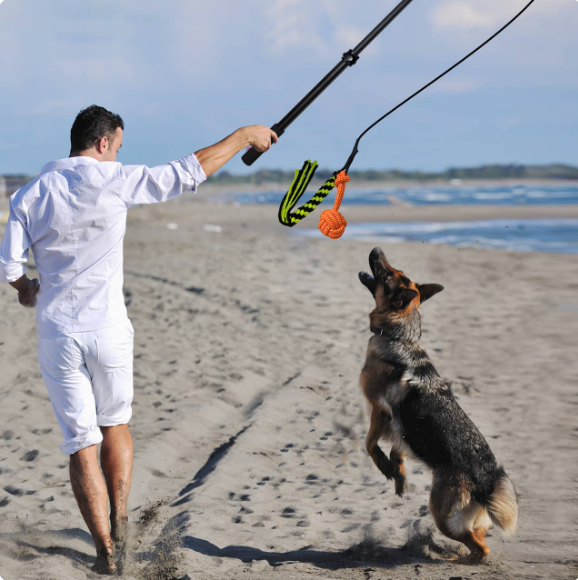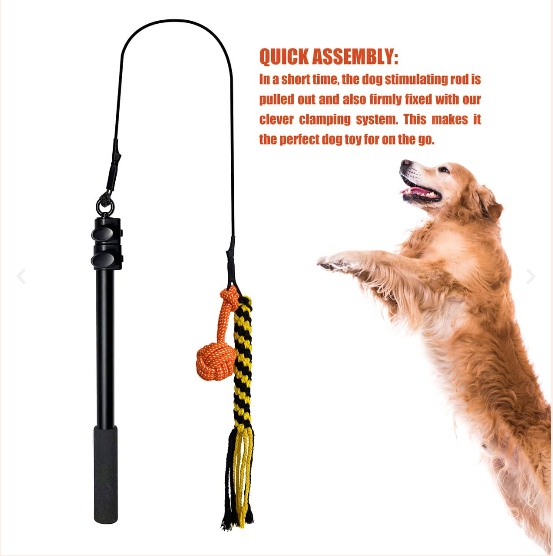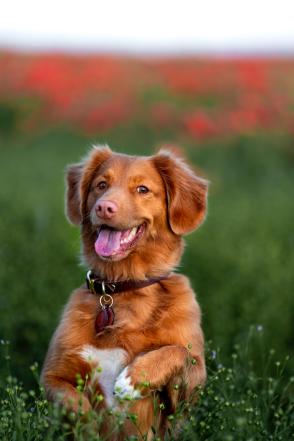Everyone who has witnessed a dog enthusiastically chasing a toy knows the boundless joy radiating from these playful creatures. This seemingly simple act of dogs chasing toys holds a wealth of information about their instincts, behavior patterns, and the benefits derived from such play.

The Psychology Behind Play and Chasing in Dogs
Dogs, regardless of their breeds and sizes, love to chase. Be it a ball, a frisbee, or a plush toy, the thrill of the chase is an essential aspect of canine psychology, underpinned by their natural instincts and behaviors.
Typical behaviors and stages in the chase
The act of a dog chasing a toy often unfolds in several distinct stages.
The first stage is the anticipation and initiation of play, which usually involves the owner presenting a toy or an object. The dog’s excitement during this phase is hard to miss, its attention focused, and tail wagging in eager anticipation.
The next stage is the chase itself. This is where the dog gets to exercise its speed, agility, and determination to catch the ‘prey’ – the toy. There’s a joyous abandonment in the way dogs pursue the object of their interest, embodying their natural instinct to chase.
The final stage is the capture. Upon reaching the toy, dogs often show a variety of behaviors. Some might choose to return it to the owner for another round of chase, embodying the fetch game.
Others might prefer to play with it independently, tossing it around or shaking it, while some dogs might guard their prize possessively.
Differences in chase behavior among different breeds
Different breeds of dogs may show different chase behaviors due to their unique historical and genetic backgrounds.
For instance, retrievers, true to their name, excel at fetching and are usually eager to return the toy for another round. On the other hand, herding breeds like Border Collies or Australian Shepherds might display behaviors akin to their herding instincts, often seen circling or directing the toy rather than simply fetching it.
Sighthounds, such as Greyhounds and Whippets, who are bred for speed and the ability to chase down game, may exhibit a more intense chase drive and often reach impressive speeds when pursuing a toy.
Understanding these breed-specific behaviors can help owners tailor playtime and training routines to suit their dogs’ natural instincts and preferences.
How the chase ritual helps in training and behavior correction
Integrating the chase ritual into training programs can be extremely effective. For example, a well-timed throw of a toy can distract a dog from undesired behaviors such as excessive barking, chewing furniture, or jumping on guests, and instead, redirect its energy towards a more acceptable activity.
Moreover, the act of chasing and fetching a toy can also be used as a reward-based training method. Dogs that retrieve the toy can be rewarded with treats or praises, reinforcing their good behavior. This way, the chase ritual can serve to strengthen command obedience, improve dog-owner communication, and foster a positive learning environment.
The Ritual of the Chase: A Closer Look
The act of a dog chasing a toy often involves a few key stages. First is the anticipation and initiation of play, as the owner presents the toy. The dog’s excitement is usually evident as it prepares to chase. Then comes the chase itself, where the dog uses its natural agility and speed to pursue the toy. Upon capturing the toy, a dog may choose to return it to the owner, play with it independently, or guard it possessively.

The ritual can vary depending on the dog breed as well. For instance, retrievers are typically excellent at fetching, due to their history of retrieving game, while herding breeds might show more tendency to herd the toy. Understanding these differences can help owners engage with their pets more effectively.
Moreover, integrating toy chasing into training routines can be effective for behavior correction. A well-timed throw of a toy can divert a dog from unwanted behaviors, such as barking or chewing furniture, and redirect it to more positive activities.
Benefits of Toy Chasing for Dogs
Physical Benefits: Exercise and Health
Chasing toys offers dogs a fantastic source of physical exercise. This activity promotes cardiovascular health, helps maintain a healthy weight, and enhances overall muscular strength. Particularly for high-energy breeds, chasing toys can be a valuable means of burning off excess energy and keeping them fit and healthy. Regular physical activity can also help to prevent conditions like obesity and arthritis in dogs, promoting their longevity.
Mental Benefits: Stimulation and Happiness
Beyond physical benefits, toy-chasing also contributes significantly to a dog’s mental well-being. The act of chasing provides cognitive stimulation as dogs must anticipate the toy’s movement and decide the best strategy to capture it. This mental exercise can help keep their minds sharp and engaged, potentially slowing the cognitive decline associated with aging.
Furthermore, the excitement and pleasure derived from play release endorphins in dogs, similar to humans. This surge of ‘feel-good’ hormones contributes to their overall sense of happiness and contentment, reducing stress and anxiety levels.
Social Benefits: Bonding with Humans and Other Pets
Toy-chasing serves as an excellent socialization tool as well. When dogs play fetch with their owners, it strengthens the bond between them, reinforcing trust and mutual understanding. This shared activity not only improves communication between dogs and humans but also builds a strong emotional connection.
When multiple pets are in the household, playtime can facilitate positive interaction among them. It provides an opportunity for dogs to learn appropriate play behaviors and social skills, essential for cohabitation and interaction with other pets.
Reducing Problem Behaviors: How Play Can Distract from Destructive Actions
Dogs often resort to destructive actions, such as chewing furniture or digging, when they’re bored or have excess energy to burn. Regular toy-chasing sessions can effectively provide a healthy outlet for these tendencies.
Redirecting a dog’s attention to a toy when it starts to engage in unwanted behavior can also serve as a constructive form of behavior correction. By satisfying their need for physical activity and mental stimulation through play, owners can minimize the occurrence of problem behaviors and promote a more harmonious living environment.

Enhancing Your Dog’s Play and Chase Time
To make the most of playtime, it’s important to choose the right toys. Toys should be suitable for the dog’s size and chewing strength, engaging, and safe. During playtime, ensure that the environment is safe, with no potential hazards that the dog might accidentally run into or swallow.
Integrating play into training and daily routines can be beneficial too. It can serve as a reward for good behavior, help in energy management, and strengthen the owner-dog relationship.
Conclusion
In conclusion, the act of a dog chasing a toy is more than just a source of amusement. It’s a manifestation of their natural instincts, an essential part of their mental and physical health, and a critical tool for training and bonding. As dog owners, understanding and participating in this playtime ritual is an opportunity to enrich the lives of our canine companions, and in the process, our own as well.
 Adair
Adair